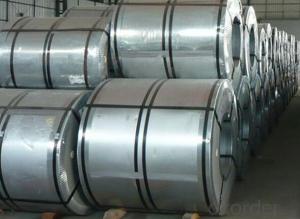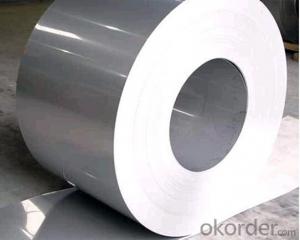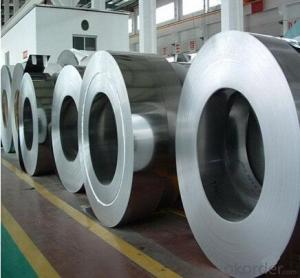Grade JIS G3302-SGCC Galvanized Steel Coil
- Loading Port:
- Tianjin
- Payment Terms:
- TT or LC
- Min Order Qty:
- 3 m.t.
- Supply Capability:
- 10000 m.t./month
OKorder Service Pledge
OKorder Financial Service
You Might Also Like
Item specifice
Specification of Grade JIS G3302-SGCC Galvanized Steel Coil
Galvanized Steel Coil
(1) Width: 600-1570mm
(2) Thickness: 0.13-5.0mm
(3) Grade: JIS G3302-SGCC-SGC570, SGCH (full hard-G550), SGHC-SGH540
EN10346-DX51D+Z, DX53D+Z, S250GD-S550GD
ASTM A653-CS-B, SS255-SS550
(4) Zinc Coating: Z20g/m2~Z400g/m2 (both side total coating thickness)
Packaging & Delivery of the Grade JIS G3302-SGCC Galvanized Steel Coil
Packaging Detail | Sea worthy packing /as per customer's packing instruction |
Delivery Detail | 15 ~ 40 days after receiving the deposit |
FAQ:
Are you a trading company or manufacturer? | Manufacturer |
What’s the MOQ? | 25 metric ton |
What’s your delivery time? | 15-35 days after downpayment received |
Do you Accept OEM service? | Yes |
what’s your delivery terms? | FOB/CFR/CIF |
What's the Payment Terms? | 30% as deposit,70% before shipment by T/T |
Western Union acceptable for small amount. | |
L/C acceptable for large amount. | |
Scrow ,Paybal,Alipay are also ok | |
Why choose us? | Chose happens because of quality, then price, We can give you both. Additionally, we can also offer professional products inquiry, products knowledge train (for agents), smooth goods delivery, excellent customer solution proposals. |
What's your available port of Shipment? | Main Port, China |
What’s your featured services? | Our service formula: good quality+ good price+ good service=customer's trust |
Where are your Market? | Covering more than 160 countries in the world |
Company Introduction
CNBM International Corporation is the most import and export platform of CNBM group(China National Building Material Group Corporation) ,which is a state-owned enterprise, ranked in 270th of Fortune Global 500 in 2015.
With its advantages, CNBM International are mainly concentrate on Cement, Glass, Iron and Steel, Ceramics industries and devotes herself for supplying high quality series of refractories as well as technical consultancies and logistics solution.
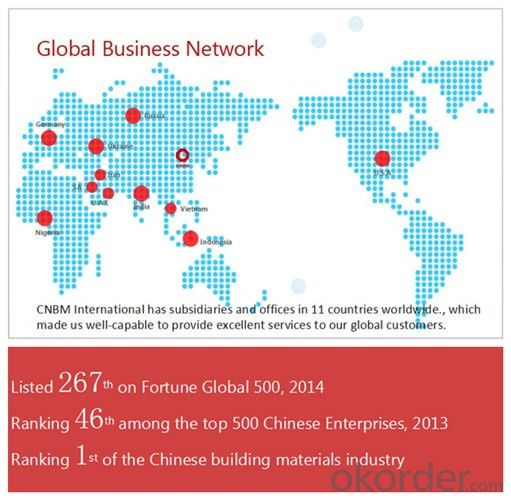
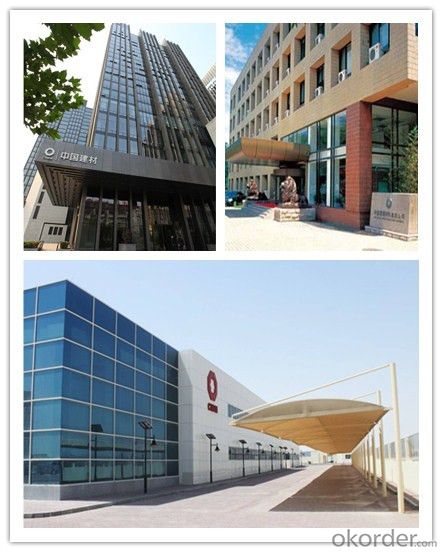
- Q:What are the different types of surface treatments for steel coils?
- There are several different types of surface treatments available for steel coils, each designed to enhance the appearance, protect against corrosion, and improve the overall durability of the steel. Some of the commonly used surface treatments for steel coils include: 1. Hot-dip galvanizing: This process involves immersing the steel coils in a bath of molten zinc, which forms a protective layer on the surface. Hot-dip galvanizing provides excellent corrosion resistance and can withstand harsh environments. 2. Electro-galvanizing: In this method, a thin layer of zinc is electroplated onto the surface of the steel coils. Electro-galvanizing offers good corrosion resistance and improves the aesthetics of the steel. 3. Organic coating: Steel coils can be coated with organic materials such as paints, lacquers, or polymer films. These coatings provide protection against corrosion, abrasion, and UV radiation, while also offering a wide range of color options. 4. Phosphating: Phosphating is a chemical treatment that converts the steel surface into a layer of phosphate crystals. This treatment enhances the adhesion of subsequent coatings and improves the corrosion resistance of the steel. 5. Chromating: Also known as passivation, chromating involves the application of a chromate conversion coating onto the steel surface. This treatment enhances the corrosion resistance and provides a decorative finish. 6. Oiling: Oiling is a simple surface treatment that involves applying a thin layer of oil onto the steel coils. This treatment helps prevent corrosion during storage and transportation and can be easily removed before further processing. 7. Pickling: Pickling is a process where the steel coils are immersed in an acid solution to remove impurities and scale from the surface. This treatment improves the surface finish and prepares the steel for subsequent processing or coatings. 8. Tin plating: Steel coils can be coated with a layer of tin through electroplating. Tin plating provides excellent corrosion resistance, solderability, and aesthetic appeal. These are just a few of the many surface treatments available for steel coils. The choice of treatment depends on the specific requirements of the application, including the desired appearance, corrosion resistance, and environmental conditions the steel will be exposed to.
- Q:I'm doing a commercial for chemistry and I need to know any kind of chemistry dealing with Callaway Big Bertha Irons. I know they are stainless steel but any more info would help out! Thank you! :)
- Stainless steel is a mixture of metals, each metal is included in order to make up for each others weaknesses. Each metal is included due to a property that is benificial in some way, for instance Chromium is included because it makes the stainless steel 'stainless'. In chemistry a mixture of metals, stainless steel, is called an alloy.
- Q:What are the common manufacturing defects in steel coils?
- Common manufacturing defects in steel coils include surface defects such as scratches, pits, and dents, as well as internal defects like inclusions, cracks, and voids. Other common defects can include uneven thickness, waviness, and coil set.
- Q:Is it faster to smith steel or mithril in Rinescape assuming I'm going to mine everything myself?Mining level: 76Smithing level: 55
- i think steel would be better since there isn't a lot of mithril ore and it would take a lot of time to mine it and it will take also 4 coals to make a mith bar and 2 only for a steel bar
- Q:What are the different methods of edge wave correction for steel coils?
- There are several methods commonly used to correct edge waves in steel coils. These methods aim to eliminate or minimize the occurrence of edge waves, which are deformations that can occur along the edges of steel coils during processing or handling. One of the most common methods is called edge wave flattening. This technique involves using hydraulic or mechanical devices to apply pressure to the edges of the coil, effectively flattening out any waves or deformations. This can be done during the coil processing stage or as a separate step after the coil has been produced. Another method is known as edge trimming. In this approach, the edges of the coil are trimmed or cut to remove any waves or deformations. This can be done through mechanical shearing or using laser cutting technology. Edge trimming not only corrects the edge waves but also ensures that the coil has straight and smooth edges. Additionally, tension leveling is another popular method for edge wave correction. This technique involves subjecting the coil to tension forces, which helps to stretch and flatten out any waves or deformations. Tension leveling is typically done during the processing stage and is effective in correcting both edge waves and other surface defects. Moreover, roll leveling can be employed to correct edge waves in steel coils. This method utilizes a set of rolls to apply pressure to the coil, gradually flattening out any waves or deformations. Roll leveling is a versatile technique that can be used for various types of coil defects, including edge waves. Lastly, technology advancements have led to the development of automated edge wave correction systems. These systems utilize sensors and computer algorithms to detect and correct edge waves in real-time during the coil processing stage. This method ensures precise and consistent correction, minimizing the need for manual intervention and improving overall efficiency. Overall, the different methods of edge wave correction for steel coils include edge wave flattening, edge trimming, tension leveling, roll leveling, and automated correction systems. Each method has its own advantages and can be chosen based on the specific requirements and constraints of the coil processing operation.
- Q:the difference between the original steel and mild steel from percentage of carbon
- Carbon steel includes mild steel. Mild carbon steel(as it is referred to) contains .05 - .29% carbon. Medium carbon steel is from .30 - .59%. High carbon steel is from .60 - .99%. Ultra high carbon steel is from 1.00 - 2.00%. Steel is considered carbon steel up to 2.1%. Past that it is considered cast iron. The more carbon in the steel the harder and less ductile and maleable it is and also the more brittle it is. The less carbon in the steel more it will bend and shape without breaking. So in essence carbon adds strength but takes away from its elasticity. If you are interested in this subject an interesting source is swordmaking where hardness(carbon content) is crucial. The information behind this subject is pretty infinite.
- Q:What are the different types of steel coil slitting methods?
- There are three main types of steel coil slitting methods: rotary slitting, loop slitting, and pull-through slitting. Rotary slitting involves using circular knives to cut the coil into narrower strips. Loop slitting involves passing the coil through a loop that is formed between two sets of knives, which then cuts the coil into multiple strips. Pull-through slitting involves pulling the coil through an adjustable slitting head, where the knives cut the coil into desired widths.
- Q:How are steel coils used in the manufacturing of household appliances?
- Steel coils are used in the manufacturing of household appliances as a raw material for forming various components such as panels, frames, and structures. The coils are typically cut, shaped, and welded to create the necessary parts used in appliances like refrigerators, stoves, and washing machines. The durability and strength of steel make it an ideal material for ensuring the longevity and performance of these appliances.
- Q:like, what can steel make?
- buildings bridges automobiles elevators railroads and railroad equipment appliances and many many more. Steel is used almost everywhere. reference: Iron and steel are used widely in the construction of roads, railways, infrastructure, and buildings. Most large modern structures, such as stadiums and skyscrapers, bridges, and airports, are supported by a steel skeleton. Even those with a concrete structure will employ steel for reinforcing. In addition to widespread use in major appliances and cars (Despite growth in usage of aluminium, it is still the main material for car bodies.), steel is used in a variety of other construction-related applications, such as bolts, nails, and screws.[66] Other common applications include shipbuilding, pipeline transport, mining, offshore construction, pipeline transport, aerospace, white goods (e.g. washing machines), heavy equipment (e.g. bulldozers), office furniture, steel wool, tools, and armour in the form of personal vests or vehicle armour (better known as rolled homogeneous armour in this role). .
- Q:a concrete or steel building?also, what is the density of concrete and steel? is concrete heavier in steel for the same volume?
- The denisty of reinforced concrete is taken to be 150 lbs/ft^3 The density of carbon structural steel is 490 lbs/ft^3
1. Manufacturer Overview |
|
|---|---|
| Location | |
| Year Established | |
| Annual Output Value | |
| Main Markets | |
| Company Certifications | |
2. Manufacturer Certificates |
|
|---|---|
| a) Certification Name | |
| Range | |
| Reference | |
| Validity Period | |
3. Manufacturer Capability |
|
|---|---|
| a)Trade Capacity | |
| Nearest Port | |
| Export Percentage | |
| No.of Employees in Trade Department | |
| Language Spoken: | |
| b)Factory Information | |
| Factory Size: | |
| No. of Production Lines | |
| Contract Manufacturing | |
| Product Price Range | |
Send your message to us
Grade JIS G3302-SGCC Galvanized Steel Coil
- Loading Port:
- Tianjin
- Payment Terms:
- TT or LC
- Min Order Qty:
- 3 m.t.
- Supply Capability:
- 10000 m.t./month
OKorder Service Pledge
OKorder Financial Service
Similar products
New products
Hot products
Related keywords



